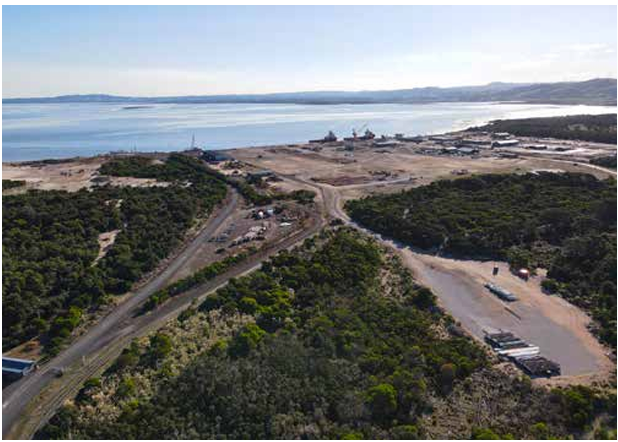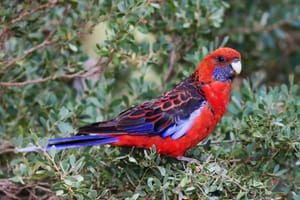The detailed plans for ExxonMobil’s proposal to convert the Barry Beach Marine Terminal (BBMT) into a dismantling and storage site for obsolete oil and gas rigs have been made publicly available for the first time, in documents submitted to the Federal Government’s Environmental Protection and Biodiversity Act (EPBC Act) on 1 May.
The in-depth information and reports have sparked serious concerns about environmental and ecological risks to Corner Inlet.
The plan involves bringing ashore around 60,000 tonnes of offshore infrastructure through Corner Inlet, a Ramsar-listed wetland and Marine National Park.
Under the plan, up to 12 rigs would be temporarily stored at the site before being cut up for recycling. To enable this, Esso has revealed that it intends to concrete over roughly 90 hectares of coastal wetland - effectively transforming the natural landscape into a heavy industrial hardstand.
Local residents, organised under the Corner Inlet Alliance and supported by Friends of the Earth, have called for a full Environmental Effects Statement (EES). A petition presented to the Victorian Legislative Council echoes this demand, citing the scale and potential long-term damage of the project.
Alliance spokesperson Julia Merrington says the proposed use of the site represents a fundamental shift in activity. “This isn’t business as usual. Barry Beach has never been used to break up rigs — and it shouldn’t start now, especially in a Ramsar-listed wetland,” she said.
Disturbance to sediment is a major concern for the group, with pilings and soil movement possibly releasing stored carbon and legacy pollutants. Esso has also acknowledged the risk of contamination at the site. Any runoff from excavation or cleaning activities could pollute adjacent wetlands and the broader inlet, especially during heavy rain events.
The company says rig components will be cleaned on-site and stored on an impermeable membrane, with runoff collected in holding ponds and treated. But critics question whether this is adequate protection in a storm-and flood prone area.
The Corner Inlet Alliance are also concerned that noise and vibration during construction, including from piling and wharf reinforcement, will affect marine life and birds during breeding and nesting seasons. Esso plans to install sound baffles to reduce noise — an admission, residents say, that the impacts will be significant.
Light pollution is also a growing concern. Merrington notes that even in its current state, BBMT is lit for much of the night. “We see the lights from across the water — and that’s before the real industrialisation begins”, she said.
There is also confusion around Esso’s intent to “desilt” the wharf and nearby channels. Past projects have been denied dredging permits in Corner Inlet due to the risk of damaging seagrass beds and mangrove systems. Merington fears that “desilting” may amount to dredging in all but name.
Globally, the dismantling of oil and gas infrastructure is handled in highly industrialised facilities built specifically for the task — often at ports that have invested hundreds of millions in environmental safeguards. Doing this work in the middle of a fragile wetland, critics argue, sets a poor precedent.
Merrington says Australia needs such a facility - but in the right place, and paid for by the hydrocarbon industry.
“This work has to be done somewhere — but not here. Not in Corner Inlet.”
Esso is holding further community consultation sessions on Tuesday 20 May at Foster War Memorial Arts Centre, Wednesday 21 May at Leongatha Memorial Hall and Monday 26 May at The Yarram Hub. David Barrett



